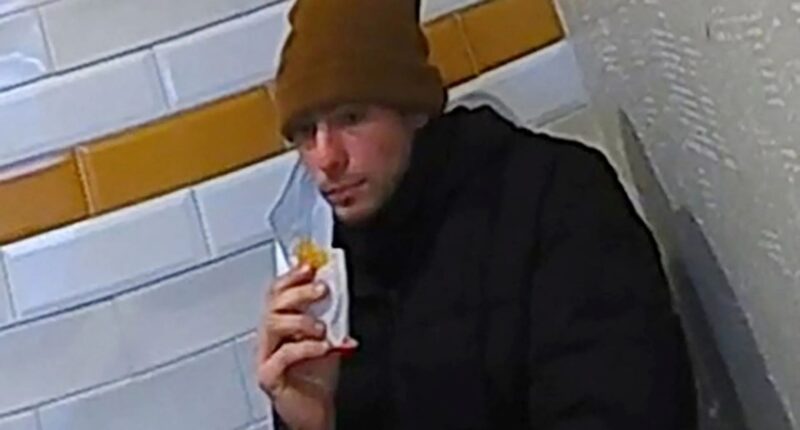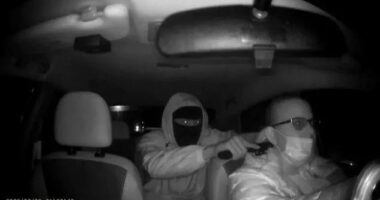THE McDonald’s worker who has been hailed a “hero” after spotting suspected CEO assassin Luigi Mangione could lose out on the $60,000 reward.
Mangione, 26, spent five days on the run but was eventually caught out by a rookie cop as he sat munching on a McDonald’s hash brown on Monday.



New York Police Department initially offered a $10,000 reward for anyone on information on their suspect.
Then, as the search grew over the weekend, the FBI backed the NYPD in the investigation and added an eye-watering addition of $50,000 to the pot.
The McDonald’s worker that spotted Mangione said he was “acting suspiciously” in the restaurant at around 9:15am.
They added that he appeared to have fraudulent documents on him.
The staff member phoned 911 and, when cops arrived and quizzed Mangione, the data engineer “started to shake” moments before his arrest.
Officers found a fake ID, a “ghost gun” resembling the one in CCTV footage of the incident, and a manifesto criticizing the healthcare industry during a search of the individual.
A mere few hours later, investigators charged Mangione with murder and four other counts including firearms charges.
The rules behind the $60,000 reward are complicated – with regulations in place by the FBI that could hinder the massive payout.
FBI rules stipulate that tipsters’ calls must lead to an “arrest and conviction”.
The process of extradition to New York, trial, and potential conviction presents a significant hurdle that could delay any financial rewards for the McDonald’s employee.

In bigger cases, tipsters cannot nominate themselves for the FBI reward.
As a result, the worker may need to be recommended by an investigative entity to be eligible for the substantial reward as detailed on the Rewards for Justice page.
At this point, an interagency committee reviews the nomination before passing it to the secretary state.
They then make the final call on whether the tipster is granted the cash.
But the full reward amount could also be disputed as the payment amounts are based on factors from the value of information provided, Unilad reports.
This could include the level of threat, the severity of danger or injury to people or property and the degree of the tipster’s cooperation.
The other portion of the reward total from the NYPD is granted through Crime Stoppers, where tipsters get a reference number.
This is crucial to getting the cash as the tipster has to use it to chase or check the status of the investigation online.
Who is Luigi Mangione?

MANGIONE, 26, was regarded as a beloved, clever and wealthy man by his family, friends and all who knew him.
He was born and raised in Maryland where he was valedictorian of his high school graduating class at Gilman School in Baltimore.
He had no prior criminal history and was said to have been a model student, footballer and all-round athlete at high school.
One former student from the Gilman School told The U.S. Sun Mangione was “popular” and had a “big circle of friends.”
The former student, who asked not to be identified, said: “We went to the same school but didn’t really have the same friends. I’m really shocked by this whole thing.
“I think he played soccer, it was an all-boys school, so being a good athlete got you social currency for sure.”
After, Mangione graduated cum laude from the University of Pennsylvania, where he studied Computer and Information Science, according to his LinkedIn profile.
He also got his masters from the Ivy League school.
Mangione was reportedly a data engineer at a car company in California before moving to Hawaii.
His cousin is also Republican Maryland House of Delegates member Nino Mangione.
They then lodge a claim with the NYC Police Foundation and the Crime Stoppers Board of Directors who decide whether to approve the tip and instruct the person on how to get access to it.
But if the tipster called 911 instead of Crime Stoppers, the claim may not be valid.
Overall, the rewards can only be paid out if the arrest leads to indictment or conviction from the court.
Therefore the McDonald’s employee could be waiting for a long period of time and – in the end – may not even get any of the cash.
New York prosecutors later filed second-degree murder charges against Mangione for the December 4 assassination of Thompson.
He also faces two counts of second-degree criminal possession of a weapon, one count of second-degree possession of a forged document, and one count of third-degree criminal possession of a weapon in New York.
Mangione’s attorney, Thomas Dickey, has repeatedly preached his client’s innocence.
He told CNN that he hasn’t seen any evidence that Mangione is “the right guy”.
When he was hauled back into court on Tuesday, Mangione was seen unleashing a frantic outburst at anyone within earshot.
He had to be restrained as he shouted claims that the situation was “out of touch and an insult to the intelligence of the American people”.
At least three deputies grabbed Mangione, clutching him by his neck as they shoved him into the Blair County Courthouse in Pennsylvania.
In court Dickey said his client is fighting extradition to New York, where he faces murder charges.
His appeal for bail has also been denied.
He is due to stay at the State Correctional Institution Huntingdon for the time being.
It comes as cops are continuing to look into a number of leads following Mangione’s capture.
One of the latest theories behind why he may have become a killer involves his pals claiming he turned “absolutely crazy” after an agonising back surgery.
X-ray pictures posted by Mangione show he suffered with a misaligned spine which was reportedly made severely worse following a surfing accident.
Former classmates have appeared to tell reporters that an operation went wrong and that this could have driven the Maryland man to the brink.





















